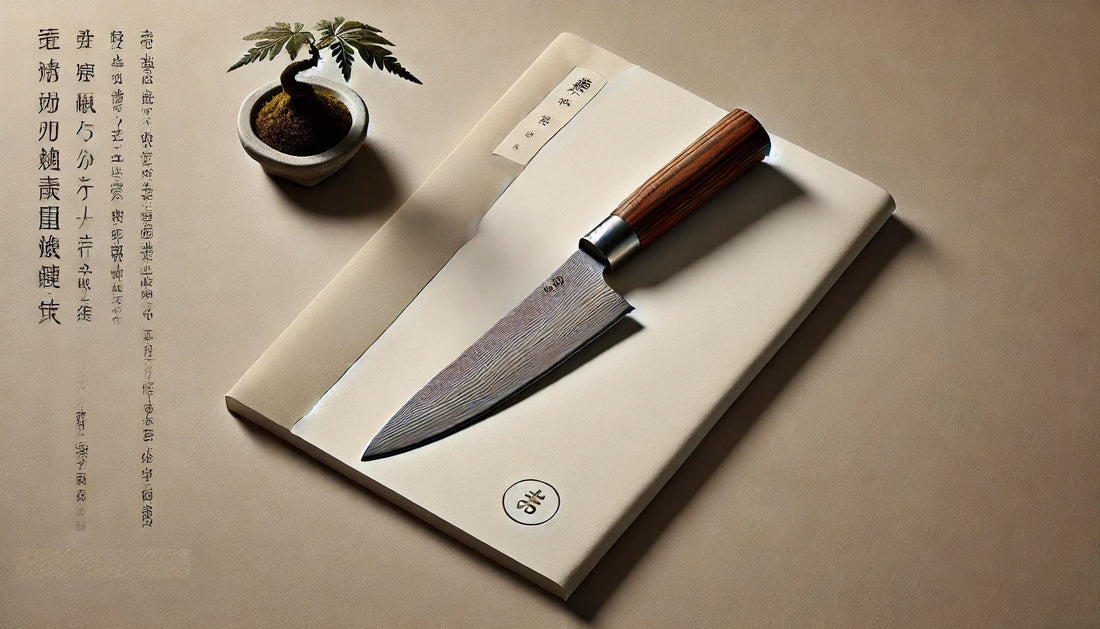
A Guide to Using the Right Knife for the Right Kitchen Task
Share
Achieving culinary excellence requires the right tools, and having the appropriate knife for each kitchen task is preferred for those who are truly passionate about cooking and kitchen tools. The correct knife not only makes your work more efficient but also ensures precision and safety. Here’s a detailed guide to pairing knives with various kitchen tasks.
Chef's Knife
Versatile and essential, the chef’s knife is the workhorse of the kitchen. Find out more about the anatomy of a chef's here. A chef's knife is ideal for:
- Chopping: Vegetables and herbs. The wide blade and curved edge make it perfect for a rocking motion.
- Slicing: Meat, poultry, and large fruits like melons can be effortlessly sliced.
- Dicing: The precision and balance of the chef's knife allow for uniform cuts.
The SEKKIN Essence Chef's Knife is made from Japanese Damascus Steel and 67 layers of high-carbon stainless steel. Its Pakkawood handle and water buffalo horn bolster ensure a comfortable and secure grip, while the sleek Magnolia wood sheath adds elegance and protection. This knife’s unparalleled sharpness and ergonomic design make it a joy to use in any kitchen.
Learn more about the benefits of using a high-quality chef’s knife in your kitchen.
Utility Knife
A smaller, versatile knife for everyday tasks that are too small for a chef’s knife but too large for a paring knife, a utility knife is ideal for:
- Slicing: Sandwiches and smaller cuts of meat.
- Chopping: Smaller vegetables and fruits.
- Cutting: Cheese and other medium-sized items.
The SEKKIN Pulse Utility Knife features a 5.9-inch blade crafted from 67 layers of Japanese Damascus Steel, providing razor-sharp performance and exceptional durability. Its fiberglass-reinforced handle and water buffalo horn bolster ensure a secure, ergonomic grip, making it a must-have for daily meal prep. With a compact yet powerful design, this knife offers the perfect balance of precision and versatility.
Paring Knife
Perfect for tasks requiring precision and control, a paring knife is ideal for:
- Peeling: Fruits and vegetables.
- Trimming: Small cuts of meat or removing seeds.
- Detail Work: Such as deveining shrimp or hulling strawberries.
The SEKKIN Waltz Paring Knife features a 3.5-inch blade made from 67 layers of Japanese Damascus Steel, delivering incredible sharpness and precision. Its fiberglass-reinforced handle and water buffalo horn bolster offer a comfortable and stable grip, making it easy to maneuver for delicate tasks. Designed for finesse and control, this knife is perfect for chefs and home cooks who value precision in their kitchen tools.
Bread Knife
Designed with a serrated edge to cut through tough exteriors without crushing the soft interior, the bread knife is ideal for:
- Bread: Slicing through crusty loaves or soft sandwich bread.
- Tomatoes: The serrated edge handles the delicate skin without squashing.
- Cakes: Leveling and slicing cakes without tearing.
Santoku Knife
Known for its versatility, similar to a chef’s knife but with a shorter, slightly different shape, a santoku knife is ideal for:
- Chopping: Vegetables and herbs.
- Dicing: Meat and fish.
- Slicing: Fruits and boneless meats.
Boning Knife
Ideal for tasks requiring flexibility and precision, especially around bones, a boning knife is ideal for:
- Deboning: Meat, poultry, and fish.
- Trimming Fat: Removing skin and excess fat from meat.
Carving Knife
Designed for slicing cooked meats, a carving knife is ideal for:
- Roasts: Turkey, ham, and beef.
- Large Fruits: Such as melons.
Tips for Choosing and Using the Right Knife
- Sharpness is Key: A sharp knife is safer and more effective. Keep your knives well-maintained.
- Comfort and Grip: Choose knives that feel comfortable in your hand and provide a secure grip.
- Practice Proper Techniques: Learn the correct way to hold and use each knife to maximize efficiency and safety.
- Knife Care: Properly clean and store your knives to maintain their quality and longevity.
Understanding the unique purposes of each knife and how to use them correctly can elevate your culinary skills and make cooking more enjoyable and efficient. At SEKKIN, we are dedicated to providing high-quality knives that meet all your kitchen needs, ensuring you have the right tool for every task.
Happy cooking!
